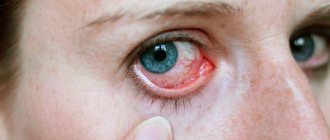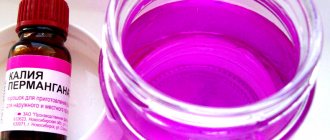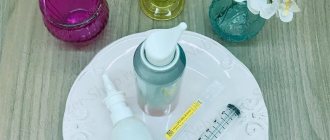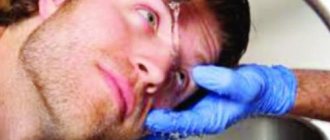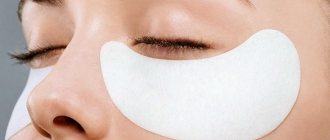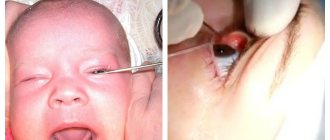Chamomile can be used to wash your eyes. A chilled decoction or water infusion is safe and almost never causes side effects, so this solution is quite suitable for hygiene procedures. Including chamomile decoction or water infusion, it can be used to wash the eyes of a child with conjunctivitis of various origins as additional procedures to the main treatment.
As a rule, in almost all cases of using chamomile to wash the eyes, there is no need for this remedy.
At the same time, you should not wash your eyes with chamomile for various diseases (including conjunctivitis), if such washes are considered as the main treatment. No chamomile preparations can treat infections that cause conjunctivitis, cannot cure eye diseases, and should not be considered as medications.
In other words, you can wash your eyes with chamomile, especially for a child, either simply for hygiene, or as an additional measure during full-fledged drug treatment. Nothing can be treated or cured with such washings.
Why is chamomile unable to fight eye infections?
In specially conducted experiments, it was shown that in a test tube, chamomile extract can inhibit the growth of certain types of bacteria, for example, Staphylococcus aureus, Streptococcus mutans, Streptococcus salivarius and some others.
Chamomile suppresses the development of Staphylococcus aureus “in vitro”, but its effectiveness in combating staphylococcal infections in body tissues has not been proven.
At the same time, no one has ever shown that any chamomile preparation is capable of suppressing the growth of these or other bacteria directly in inflamed tissues of the body, including in the mucous membrane of the eye. Therefore, it is somewhat reckless to consider such drugs as effective medicines, and replacing them with modern proven drugs is unacceptable.
The effectiveness of chamomile in the fight against viral infections that can cause ophthalmic diseases has never been shown, even in vitro.
Therefore, it is impossible to fight the main causes of conjunctivitis - bacterial and viral infections - with chamomile preparations. Therefore, dripping them as antibacterial or antiviral agents does not make much sense.
How can chamomile be beneficial if you wash your eyes with it?
It is known that chamomile has a fairly pronounced anti-inflammatory effect. Partly due to this, chamomile is used for conjunctivitis to relieve inflammation. This, however, is unsafe: if antibacterial drugs (antibiotics or antiseptics) are not taken in parallel, it is impossible to relieve inflammation itself as a normal protective reaction of the body, otherwise the infection will develop even faster in the absence of resistance.
If effective antibacterial or antiviral therapy is carried out, chamomile as an anti-inflammatory agent will not be needed, since when the infection is suppressed, the inflammation will subside on its own. In this case, you can wipe or wash your eyes with chamomile decoction or water infusion to speed up the completion of inflammation, but there is no urgent need for this procedure.
To date, there is no experimental data that would confirm the benefits and necessity of washing, rubbing or instilling chamomile into the eyes.
As a result, it makes no sense to drop chamomile into your eyes, rinse or wipe them with it. This remedy is considered outdated and has no advantages over more modern antiseptics and antibiotics with proven effectiveness, as well as over more powerful anti-inflammatory drugs.
If a newborn baby does not have signs of illness, there is no need to rinse or wipe his eyes with chamomile infusion.
In the vast majority of cases, mothers try to wash their children’s eyes with chamomile, especially infants, only to avoid sitting with their hands folded after taking truly effective medications, or simply to prevent “imaginary” diseases. Chamomile itself is used here only as a placebo, the fact of its use means more to the patient or the parents of a sick child than the result. That is, in fact, many parents try to wash their child’s eyes with chamomile or drip it just to do something, and not to get a specific therapeutic effect.
Also, many mothers believe that a newborn’s eyes must be washed to remove accumulations of mucus after the baby sleeps or cries in order to prevent the development of any infection. Of course, they consider rinsing their eyes with plain water “not prestigious” and are looking for more sophisticated methods. In this regard, chamomile turns out to be ideal for them - it is both quite safe and is considered an effective folk medicine.
In fact, in a healthy child, the eyes clean themselves on their own, and accumulations of mucus with elements of pollution in the corners of the eye can be washed off either with clean water, or even removed with a handkerchief or fingers. There is no need to rinse your eyes with chamomile remedy for this.
Is it possible to wash your eyes with chamomile?
Chamomile can be used to wash your eyes. A chilled decoction or water infusion is safe and almost never causes side effects, so this solution is quite suitable for hygiene procedures. Including chamomile decoction or water infusion, it can be used to wash the eyes of a child with conjunctivitis of various origins as additional procedures to the main treatment.
As a rule, in almost all cases of using chamomile to wash the eyes, there is no need for this remedy.
At the same time, you should not wash your eyes with chamomile for various diseases (including conjunctivitis), if such washes are considered as the main treatment. No chamomile preparations can treat infections that cause conjunctivitis, cannot cure eye diseases, and should not be considered as medications.
In other words, you can wash your eyes with chamomile, especially for a child, either simply for hygiene, or as an additional measure during full-fledged drug treatment. Nothing can be treated or cured with such washings.
Why is chamomile unable to fight eye infections?
In specially conducted experiments, it was shown that in a test tube, chamomile extract can inhibit the growth of certain types of bacteria, for example, Staphylococcus aureus, Streptococcus mutans, Streptococcus salivarius and some others.
Chamomile suppresses the development of Staphylococcus aureus “in vitro”, but its effectiveness in combating staphylococcal infections in body tissues has not been proven.
At the same time, no one has ever shown that any chamomile preparation is capable of suppressing the growth of these or other bacteria directly in inflamed tissues of the body, including in the mucous membrane of the eye. Therefore, it is somewhat reckless to consider such drugs as effective medicines, and replacing them with modern proven drugs is unacceptable.
The effectiveness of chamomile in the fight against viral infections that can cause ophthalmic diseases has never been shown, even in vitro.
Therefore, it is impossible to fight the main causes of conjunctivitis - bacterial and viral infections - with chamomile preparations. Therefore, dripping them as antibacterial or antiviral agents does not make much sense.
How can chamomile be beneficial if you wash your eyes with it?
It is known that chamomile has a fairly pronounced anti-inflammatory effect. Partly due to this, chamomile is used for conjunctivitis to relieve inflammation. This, however, is unsafe: if antibacterial drugs (antibiotics or antiseptics) are not taken in parallel, it is impossible to relieve inflammation itself as a normal protective reaction of the body, otherwise the infection will develop even faster in the absence of resistance.
If effective antibacterial or antiviral therapy is carried out, chamomile as an anti-inflammatory agent will not be needed, since when the infection is suppressed, the inflammation will subside on its own. In this case, you can wipe or wash your eyes with chamomile decoction or water infusion to speed up the completion of inflammation, but there is no urgent need for this procedure.
To date, there is no experimental data that would confirm the benefits and necessity of washing, rubbing or instilling chamomile into the eyes.
As a result, it makes no sense to drop chamomile into your eyes, rinse or wipe them with it. This remedy is considered outdated and has no advantages over more modern antiseptics and antibiotics with proven effectiveness, as well as over more powerful anti-inflammatory drugs.
If a newborn baby does not have signs of illness, there is no need to rinse or wipe his eyes with chamomile infusion.
In the vast majority of cases, mothers try to wash their children’s eyes with chamomile, especially infants, only to avoid sitting with their hands folded after taking truly effective medications, or simply to prevent “imaginary” diseases. Chamomile itself is used here only as a placebo, the fact of its use means more to the patient or the parents of a sick child than the result. That is, in fact, many parents try to wash their child’s eyes with chamomile or drip it just to do something, and not to get a specific therapeutic effect.
Also, many mothers believe that a newborn’s eyes must be washed to remove accumulations of mucus after the baby sleeps or cries in order to prevent the development of any infection. Of course, they consider rinsing their eyes with plain water “not prestigious” and are looking for more sophisticated methods. In this regard, chamomile turns out to be ideal for them - it is both quite safe and is considered an effective folk medicine.
In fact, in a healthy child, the eyes clean themselves on their own, and accumulations of mucus with elements of pollution in the corners of the eye can be washed off either with clean water, or even removed with a handkerchief or fingers. There is no need to rinse your eyes with chamomile remedy for this.
At the same time, rinsing or rubbing your eyes with chamomile may not always be safe.
When should chamomile not be used to wash your eyes?
It is important to remember that any procedures related to eye hygiene or treatment are potentially dangerous. The mucous membrane, eyelids, and eyeball are very sensitive to touch and are easily injured even by fingers. Therefore, if it is possible to refuse certain procedures, especially if certain tissues are inflamed, it is better to refuse them.
This is especially true for children, especially for infants, since when washing the eye, the child may suddenly move, jerk his head and cause injury to himself.
You definitely cannot wash the eyes of a newborn child with chamomile without signs of inflammation. Any manipulations with the eyes of a newborn or infant, especially those carried out without professional training, are traumatic and are carried out only when absolutely necessary. There is no such urgent need to wash, wipe or instill chamomile in your eyes if there are no signs of disease.
In addition, chamomile, although rare, causes side effects. As a rule, these are allergic reactions, which occur more often when washing the eyes than with other methods of using the product. If, after washing, rashes appear on the face, or pain is felt in the eyes themselves, the procedures should be stopped.
Ophthalmoherpes is a disease that often leads to conjunctivitis and requires intensive therapy with antiherpetic drugs. Chamomile alone will not help the child in this case.
Finally, the most dangerous situation is an attempt to replace the full treatment of ophthalmic diseases with washing, rubbing or instilling them with chamomile. In some cases, conjunctivitis must be treated with antibiotics, antiseptics or powerful antiviral (usually antiherpetic) agents, otherwise it can become complicated with very dangerous consequences, including loss of vision. Attempts in such cases to wash the eyes with chamomile in order to avoid taking effective pharmaceuticals are dangerous due to precisely such complications, especially in children: chamomile does not protect against complications, and if it replaces effective drugs, the disease can have consequences.
You should also not wash your eyes with an alcoholic infusion of chamomile, since alcohol can dry out or burn the mucous membrane of the eye. All folk remedies used for eye drops must be water-based. In particular, the eyes can be instilled with a decoction, an aqueous infusion, or a simple aqueous solution of crushed chamomile flowers.
Summary
- You can rinse your eyes with chamomile, but it is not necessary: this remedy does not have a therapeutic effect (to put it simply, it is useless), but rinsing procedures can be fraught with injury to the eye;
- There is meaning in washing the eyes with chamomile only when a decoction or water infusion of this remedy is used as an anti-inflammatory agent while taking antibacterial or antiviral drugs;
- You should not wash your eyes with chamomile instead of a full examination by a doctor and treatment with effective medications. Such self-medication can result in complications of an ophthalmic disease, including irreversible visual impairment.
Find out also:
Sources:
- WHO monographs on medicinal plants widely used in the Newly Independent States (NIS). — World Health Organization, 2010
- James A. Duke - Handbook of Medicinal Herbs. Second Edition. — CRC Press, 2002.
leeterra.com
When should chamomile not be used to wash your eyes?
It is important to remember that any procedures related to eye hygiene or treatment are potentially dangerous. The mucous membrane, eyelids, and eyeball are very sensitive to touch and are easily injured even by fingers. Therefore, if it is possible to refuse certain procedures, especially if certain tissues are inflamed, it is better to refuse them.
This is especially true for children, especially for infants, since when washing the eye, the child may suddenly move, jerk his head and cause injury to himself.
You definitely cannot wash the eyes of a newborn child with chamomile without signs of inflammation. Any manipulations with the eyes of a newborn or infant, especially those carried out without professional training, are traumatic and are carried out only when absolutely necessary. There is no such urgent need to wash, wipe or instill chamomile in your eyes if there are no signs of disease.
In addition, chamomile, although rare, causes side effects. As a rule, these are allergic reactions, which occur more often when washing the eyes than with other methods of using the product. If, after washing, rashes appear on the face, or pain is felt in the eyes themselves, the procedures should be stopped.
Ophthalmoherpes is a disease that often leads to conjunctivitis and requires intensive therapy with antiherpetic drugs. Chamomile alone will not help the child in this case.
Finally, the most dangerous situation is an attempt to replace the full treatment of ophthalmic diseases with washing, rubbing or instilling them with chamomile. In some cases, conjunctivitis must be treated with antibiotics, antiseptics or powerful antiviral (usually antiherpetic) agents, otherwise it can become complicated with very dangerous consequences, including loss of vision. Attempts in such cases to wash the eyes with chamomile in order to avoid taking effective pharmaceuticals are dangerous due to precisely such complications, especially in children: chamomile does not protect against complications, and if it replaces effective drugs, the disease can have consequences.
You should also not wash your eyes with an alcoholic infusion of chamomile, since alcohol can dry out or burn the mucous membrane of the eye. All folk remedies used for eye drops must be water-based. In particular, the eyes can be instilled with a decoction, an aqueous infusion, or a simple aqueous solution of crushed chamomile flowers.
- You can rinse your eyes with chamomile, but it is not necessary: this remedy does not have a therapeutic effect (to put it simply, it is useless), but rinsing procedures can be fraught with injury to the eye;
- There is meaning in washing the eyes with chamomile only when a decoction or water infusion of this remedy is used as an anti-inflammatory agent while taking antibacterial or antiviral drugs;
- You should not wash your eyes with chamomile instead of a full examination by a doctor and treatment with effective medications. Such self-medication can result in complications of an ophthalmic disease, including irreversible visual impairment.
For infectious diseases of the visual organ, which are characterized by inflammation, various means are used. Chamomile for the eyes has always been considered the safest remedy. It is widely used in medicine because its benefits include anti-inflammatory and antibacterial effects. Compresses, decoctions and infusions are made using chamomile.
Properties of chamomile
Chamomile is considered the most popular remedy for treating various diseases, including infectious and inflammatory ones. It got its Latin name (Matricāria chamomīlla) from the word “uterus” because this plant was used to treat gynecological diseases.
The Russian name of the flower has ethno-geographical roots. Some believe that this name came from Europe, where the plant was called romana. Others are looking for gypsy roots, since the “romale” have always been sorcerers and herbalists who also used chamomile.
In folk and official medicine this plant is used for:
- relieving spasms;
- fight against inflammation, including purulent;
- pain relief;
- calm;
- improved sleep;
- stopping bleeding;
- decrease in body temperature.
When treating conjunctivitis in children, chamomile helps relieve swelling, eliminate pain and stop the development of inflammatory processes. At the same time, the infusion of flowers has a calming effect, which is of great importance for a sick child.
Washing the eyes with chamomile is part of a set of actions and remedies used for various diseases of this organ. It is not always possible to cure conjunctivitis only by washing the eyes with herbal infusion. This can be done only in preventive cases, at the beginning of the development of the disease and after the end of the acute period.
Chamomile for the eyes is useful for any disease, except conjunctivitis, which develops as a result of an allergy to pollen. In this case, it is better to completely abandon the use of flower-based drugs.
We recommend that you familiarize yourself with the benefits and harms of chamomile infusion
Benefits of the plant
Thanks to many components, the plant relieves inflammation, eliminates swelling and allergy symptoms, and kills bacteria. Chamomile contains the following microelements that are beneficial for the body:
- matrixin;
- chamazulene;
- glycosides of stearic, oleic, palmitic, linoleic acids;
- flavonoids;
- carotene;
- vitamin C;
- coumarin;
- potassium;
- copper;
- zinc;
- selenium.
Return to contents
How to cook and wash?
In order to prepare a decoction, you need 2 tbsp dry chamomile. l. pour boiled water. The raw materials are sold in pharmacies, have the name “Chamomile” and are sold without a doctor’s prescription. Heat the container with the liquid using a water bath for 10 minutes to brew properly. The broth is cooled and purified by straining. Cotton pads are soaked in the liquid and wiped over the eyelids.
Before you begin to treat your eyes, you should wash your hands well. If there is pus or mucus in the organ of vision, you should carefully remove it using a cotton swab dipped in chamomile infusion. Clean pieces of cotton wool are dipped into the liquid, squeezed out and begin to wipe the eyes with smooth movements. This procedure should be carried out 3-4 times a day. If serious diseases are present, you cannot use chamomile-based decoction as the main remedy; you should consult a doctor to prescribe therapy.
Rinsing the eyes of infants
For prevention and therapeutic purposes, chamomile decoction can be used for the eyes of a newborn. Babies are at risk of inflammation and mucus formation because they cry often, sleep for a long time, etc. Chamomile will help eliminate discharge after a long sleep, and will also disinfect the baby’s eyelids. You need to wash your child’s eyes and brew the product in the same way as adults.
Rinsing eyes with black tea
The step-by-step process for making an eye wash is quite simple:
- It is necessary to take black leaf tea, which does not contain preservatives or other harmful additives.
- The tea leaves are poured with hot water and the finished drink is cooled to room temperature.
- Black tea must be filtered.
The resulting tea should be soaked into cotton pads, which are applied to the baby’s eyes for 5-10 minutes. The procedure can be performed twice a day. Continue washing the eyes with black tea until the adverse symptoms disappear.
Side effects
Chamomile often does not cause side effects or allergic reactions, but as with other remedies, you need to be careful when using it. Before rinsing, a cotton swab dipped in the broth should be swiped over the eye. If itching and burning occur, stop using the solution. With prolonged use of decoctions, the skin around the eyes may acquire a yellow tint, which means that the product has been absorbed into it. In case of individual intolerance, washing the eyes with chamomile decoction can lead to irritation and redness of the eyes. the occurrence of itching and burning. If such manifestations occur, you should stop using the product.
Chamomile decoction has healing, anti-inflammatory properties. Therefore, it is safe to wash your eyes with this infusion. To make it, you need to pour hot water over the inflorescences and let them cool. Side effects are extremely rare. You can wash your eyes with chamomile for children, regardless of age. For example, for inflammation of the organs of vision, you can make compresses from chamomile infusion. But in this case, you should not completely abandon pharmaceutical drops.
The use of chamomile infusion for conjunctivitis
Medicinal infusion of chamomile is used in the complex therapy of conjunctivitis. The product neutralizes the activity of harmful microorganisms and helps get rid of purulent discharge.
The chamomile infusion is prepared as follows:
- 10 grams of pre-dried flowers of a medicinal plant are poured into 0.3 liters of water;
- The product must be brought to a boil;
- The drink is infused for 20 minutes;
- After the specified time, the chamomile infusion should be filtered.
Chamomile infusion, actively used for washing the eyes of newborns, is rich in essential oils, ascorbic, linoleic and stearic acids. The drink contains minerals, tannins, and carotene. An infusion made from chamomile has a pronounced anti-inflammatory effect.
For conjunctivitis: how effective is chamomile rinsing?
Chamomile is an optional panacea for eye diseases. The doctor won't prescribe it. So, is it possible to wash your eyes with chamomile? It is not recommended to instill a decoction of this plant into the organs of vision for various infectious diseases, for example, conjunctivitis.
The inflorescences of this plant have soothing and anti-inflammatory properties. But chamomile will only help with minor ailments. If we are talking about infections and pathogenic bacteria, then this herb will be useless. But it has the right to be an auxiliary medicine. A child can also wash his eyes with chamomile decoction, but most likely for hygiene, and not for treating anything. For diseases, only medications can help.
Staphylococcus aureus and chamomile
Why doesn't chamomile have properties to overcome illnesses associated with infections? Scientists have conducted research and proven that this plant is able to overcome Staphylococcus aureus. But this is only in laboratory conditions. How this will work in the human body is unknown. And nowhere can you find proven evidence that chamomile will help with infectious eye diseases.
Perhaps in the old days people were treated with this plant, slightly suppressing ailments. But today, chamomile cannot be considered a medicinal drug and, moreover, can not be used to replace conventional medications.
While scientists conducted experiments with staphylococcus in vitro, no one studied the properties of chamomile for ophthalmic infections. It follows from this that the plant cannot cure infections of the organs of vision; therefore, there is no need to instill eye drops with its infusion and do other manipulations.
Wash solution
Will chamomile infusion be beneficial if used as a rinse solution? This herb has the ability to relieve inflammation and is often used for inflammatory processes in the gastrointestinal tract. Therefore, it can be used to relieve inflammation in conjunctivitis. But without antiseptics, on the contrary, it is impossible to relieve inflammation, since this process is protective. Do you wash your eyes with chamomile in this case? If you remove inflammation, germs will begin to spread even faster. Therefore, it is better not to do this.
If the correct medications are used to eliminate bacteria and infections for eye inflammation, then there is no need to rinse with additional chamomile. The infection will go away and the organ of vision will be healthy. But if the question arises, how to wash your eyes with chamomile for conjunctivitis? First, it is worth using pharmaceutical drops, and then using auxiliary drops.
Scientists have not yet confirmed the unique properties of chamomile, because there is no need for this. Today, there is a wide range of drugs with anti-inflammatory properties; chamomile is fading into the background. Therefore there is no need to use it. It was used before, but then there were not so many medicines. This plant does not have enough properties to overcome serious diseases; it is inferior to strong antiseptics.
The procedure for washing the eyes with chamomile for conjunctivitis
In order to understand how to wash your eyes with chamomile for conjunctivitis, it is necessary to take into account the age and condition of the patient. If a person can control himself, then the best way to treat the conjunctiva with chamomile infusion is to rinse the eye with the solution.
To do this, pour the warm liquid into a wide vessel, and then bring the eye closer to the surface of the infusion so that the eyelids touch the surface tension film. After this, you should blink frequently. As a result, the infusion will be distributed over the entire surface of the conjunctiva.
This should be done with each eye in turn. Before the procedure, the eyes are wiped with gauze soaked in warm boiled water. This removes pus and other impurities.
However, this procedure is not available to everyone. A particularly big problem with eye processing occurs in young children. Some parents doubt whether it is possible to wash the eyes with chamomile in infants. Experts say chamomile is safe and beneficial for people of all ages and conditions. The only limitation is allergies and atypical individual reactions.
We recommend that you read: The effectiveness of mother and stepmother for coughs
You can wash the eyes of small children in different ways, with the exception of what has just been described. If the treatment is complex, based on the use of different drugs, chamomile can become a solution that can be used to cleanse the eyelids, eyelashes and conjunctiva from pus and other inflammatory products.
To do this, you need to take an infusion diluted with boiled water 2 times. Gauze is moistened in the solution and used to wipe the eyelids. If conjunctivitis is severe, accompanied by the discharge of pus, then after treatment of the eyelids it is necessary to change the material. The edges of the eyes are wiped with fresh gauze - first the outer, and then the inner.
If chamomile infusion is used as the only means of fighting infection and inflammation, then 2 drops can be instilled into the third eyelid area. Here the liquid is retained longer, and when blinking it is well distributed over the entire surface of the conjunctiva.
It can also be instilled when prescribing other medications that act directly on the surface of the eye. However, in this case, it is necessary to distribute the time of the procedures so that at least 2 hours pass between procedures. Otherwise, one product will wash away the other, which will reduce the effectiveness of each of them.
The frequency of treatment for any method of use should not be less than 3 times a day. Herbal remedies act slowly. To create an effective concentration, it is necessary that the therapeutic effect lasts as long as possible.
During periods of exacerbation or threat of spread of infection, treatment in any form must be carried out frequently. Recommended frequency: 5 times a day.
The duration of treatment is not strictly regulated. Rubbing, washing or instilling must be done until the symptoms of inflammation completely disappear. It is allowed to use chamomile infusion for prophylactic purposes.
However, it is not recommended to do this constantly, as it can cause irritation of the mucous membrane and skin. In addition, the disinfecting ability of chamomile is low, so its frequent use can help microorganisms become accustomed to this product.
We recommend that you read: Turmeric and blood pressure
Washing a child's eyes: effectiveness and necessity
If a small child does not have symptoms of eye inflammation, then you should not wipe them with chamomile decoction. Children often cleanse their vision organs unnecessarily. Mostly this is self-hypnosis. Before you wash your child's eyes with chamomile, you need to think carefully. After wiping or instilling, an imaginary result appears. But the child’s mother feels much better, because she helped him.
Along with good drugs that really help, chamomile decoction can act as an auxiliary medicine. Then it seems that the decoction also helps, although in fact it does not have much effect on the baby. Parents always want to do something, to somehow help their baby. Having listened to the advice of older people that this has helped before, they begin to treat the child on their own. But over time, it will still become clear that chamomile is an ineffective medicine in the fight against infections. Then you will still have to use highly effective drugs. It’s just a pity for the time spent on self-medication for the baby.
Methods of brewing chamomile for bathing a newborn baby: decoction and infusion
The delicate skin of a small child needs special care and attention. Bathing a baby in decoctions of various herbs, such as chamomile, can cure existing irritation or minor rashes without causing harm to the baby's health.
When preparing a chamomile decoction, it is necessary to observe the proportions of the ingredients used, and also carefully monitor the reaction of the newborn’s body during and after bathing.
Carrying out such procedures is recommended not only in case of skin problems, but also as a preventive measure. On an ongoing basis, on the advice of a pediatrician, you should take chamomile baths for your baby if you have problems such as :
Washing the eyes of a newborn
Many mothers think that all newly born babies need to have their eyes treated. People are wondering how to wash a newborn’s eyes with chamomile to prevent infection from accumulating in them after sleep. And, of course, you don’t need to do this with plain water, but chamomile decoction is just the thing. Based on the fact that the decoction is definitely harmless, and it was also used many years ago. So, you can definitely wash your child’s eyes with chamomile.
General rules for washing eyes
How to properly wipe a newborn's eyes? To ensure that your baby does not experience any unpleasant sensations during the procedure, you must adhere to the following rules:
- The newborn's eyes are rubbed from the outer corner to the inner one;
- When carrying out the procedure, they use boiled water rather than running water;
- The remaining liquid is carefully removed with a gauze cloth;
- Before starting the procedure, you must thoroughly wash your hands with antibacterial soap.
There is no need to wash your child’s eyes: the main arguments and opinions of parents
In fact, a child’s visual organs are capable of cleaning themselves, without assistance. And those accumulations in the corners after sleep can be removed with your finger or a handkerchief. Is it possible to wash a child’s eyes with chamomile? The issue is controversial, but there are compelling arguments.
There is no need for washing; on the contrary, it can make things worse. With constant rubbing, a child's eye can become inflamed from pressure, and an infection can occur. Mothers say that with such a procedure everything must be sterile, the water is boiled, the bandage is clean, and it must be changed every time. Therefore, before doing something like this, you need to think about whether it is necessary. Eye soreness is common in newborns. But chamomile decoction is not always able to help here.
If the tear duct is clogged, then only a doctor can help, as well as good eye drops. Chamomile can only remove the pus and for half an hour it will seem like everything is fine, but in reality it will not help. The only good thing, as experts say, is that the plant will not cause much harm. But you shouldn’t neglect the rules.
You need to know, as doctors say, that any actions with the organs of vision are dangerous, because there is a mucous membrane there. Eyes can be easily damaged, even by finger pressure. Therefore, if there is no need to wash the eyes or apply compresses, it is better to avoid them. When you press with your finger, there is impact, and this can negatively affect your vision and cause other consequences.
This is very important to understand for those who have small, recently born children. They are even more susceptible to injury and consequences. When rinsing or instilling, the baby may twitch or move at any moment, in which case harm can be caused.
You should not start treatment on your own if suddenly an accumulation of dried pus is discovered in the corner of the child’s eye. You can remove it carefully by hand, and if nothing accumulates in the corners during the day, then everything is fine. You can always wash your eyes with chamomile, but don’t rush. But even if accumulations appear over time, it is better to consult a doctor and undergo medication treatment. This will take a couple of days. Chamomile decoction will not help, but will only make the situation worse.
Herbs for bathing newborns: string and chamomile
And our great-grandmothers began using herbs for bathing babies, who noted their calming and disinfecting effect. Indeed, by adding herbal infusions to the bath, you don’t have to worry about tap water harming your baby’s skin. When should you start bathing your baby in herbs, how often should you do it, what mixture should you choose and how to brew the herbal decoction correctly?
I usually start bathing a newborn in herbs after the umbilical wound has healed. Chamomile and chamomile are the most “gentle” herbs; they are suitable for the first bath even for two-week-old babies, so it is better to start with them. But if a newborn has any skin diseases, then the pediatrician should advise which grass to bathe the child in.
The normal concentration for the solution is 2-3 tbsp. per liter of boiling water. The resulting decoction is added to the bath to the optimum temperature of 36 degrees.
Series for bathing newborns - how to brew and how to bathe
Let's talk about how to bathe a newborn in a series. In general, bathing a newborn in a series is especially useful if the child has skin inflammation, diaper rash or an allergic rash. In this case, you can bathe the newborn in a series more often than according to the indicated scheme.
Pour 2 liters of water over the herb, bring to a boil and turn off the heat. Let it sit with the lid closed for half an hour and pour the strained infusion of the string for bathing newborns into the water of the bath.
Self-medication is dangerous
There are a number of infectious diseases of the organs of vision, and chamomile decoction will not help here. This is a common occurrence in children. He rubbed his eyes with dirty hands or sand got into them. In this way, an infection may develop. Simply rinsing your eyes with chamomile is not enough.
The worst thing that can happen is refusing full treatment and replacing it completely with rinsing using chamomile. There are many eye diseases, and some of them are accompanied by serious infections. Even conjunctivitis can come in different forms. In severe cases of this disease, without high-quality drug treatment, you can lose your vision. The disease is especially dangerous in children. They do not yet have such a strong immune system, and the infection develops quickly. The sooner you start proper drug treatment, the better. Chamomile may help somewhat, but it will not cure. Yes, and it is not able to protect against the consequences.
Advice and opinion of doctors
Some even put chamomile infusion in their eyes in alcohol, which is absolutely forbidden to do. The mucous membrane of the eye is very sensitive. In this case, you may get burned. Absolutely all drugs and folk infusions must be water-based. If it is chamomile, then you can pour boiling water over it and let it brew.
- You can still rinse and put drops in your eyes with a decoction of this plant, but it’s better not to. It is harmless, but also useless. But during cleansing you can cause additional injuries.
- You can rinse your eyes with chamomile only when you are undergoing drug treatment and you need to relieve inflammation.
The clear opinion of doctors is that chamomile is not a medicine. It will not protect against infectious diseases. Stopping medications can lead to vision loss.
A little about the disease
Causes
Pink eye (conjunctivitis) is an inflammation of the tissue on the surface of the eye and/or the inner surface of the eyelids. Age, gender, ethnicity, and race play no role in who gets pink eye. There are two types of conjunctivitis: viral conjunctivitis and bacterial conjunctivitis.
Viral conjunctivitis is mainly caused by upper respiratory tract infections from adenovirus. Bacterial conjunctivitis is a common type of pink eye caused by bacteria that infect the eye through various sources of contamination. More common causes of pink eye include:
- Infections (viruses, bacteria).
- Inflammatory causes such as chemicals, fumes, dust, and particulate matter.
- Allergies.
- Injuries.
- Oral genital contact with a person who may be infected with a sexually transmitted disease (STD), such as chlamydia, gonorrhea or herpes.
- Gonorrhea.
- Staphylococcal infection.
- Haemophilus influenzae (type B) is an infectious bacteria that can cause diseases such as pneumonia and meningitis.
- Direct contact with a person who has bacterial conjunctivitis.
Will rinsing help with eye infections?
Most often, conjunctivitis is not chronic. It may go away on its own in a few days, but with the use of medication it can be cured in a shorter period of time. Antibacterial drugs are often used to treat conjunctivitis, however, these drugs can cause side effects.
In most cases, treatment for eye infections involves compresses, eye drops, creams, or antibiotics. Topical antiviral therapy may be necessary if the eye infection is caused by a virus. If you don't want to resort to traditional medicine, you can try folk remedies.
An important component of the treatment of many diseases is eye washing. In professional language, such an event is called irrigation of the conjunctival sac with a stream of liquid. Effectively treating infections in and around the eyes requires getting rid of the infection-causing germs and calming any inflammation.
ATTENTION! It is important to always wash your hands before applying any product to your eyes. This will help prevent the infection from spreading to your eyes.
When not to wash your eyes
Typically, chamomile infusion does not cause any negative consequences, but there is one danger that should not be ignored by people suffering from hay fever. Chamomile extract may cause an allergic reaction. If you have been diagnosed with a pollen allergy, it is better not to treat with chamomile. If you are prone to an allergic reaction to other allergens, you must first conduct tests before treating conjunctivitis.
Allergic conjunctivitis is caused by an allergic reaction of the body's immune system to an allergen. Allergic conjunctivitis often occurs in people who have other symptoms of allergic diseases such as hay fever, asthma and eczema.
How to prepare chamomile infusion
Proportions
For one glass of boiled water there is:
- one tablespoon of dried chamomile;
- 1 filter bag of dry chamomile.
Instructions
The starting raw material can be in the form of bags sold in pharmacies, and in the form of crushed dried flowers, prepared along with leaves. Both options have healing power.
- One bag is poured with a glass of boiling water, and then left until it cools completely.
- The bag is squeezed out and used as a compress.
- Keep the bag for 10 minutes on each eye.
- Chamomile water itself is used for compresses and rinses.
